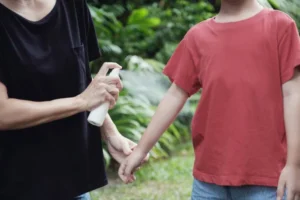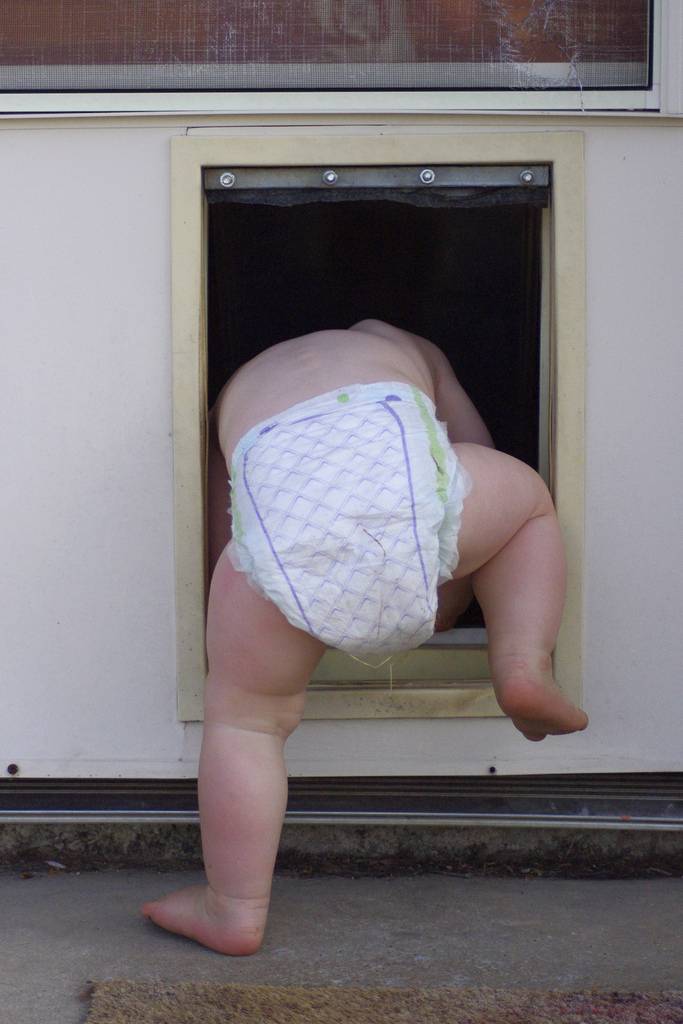Table of Contents
Children love to go outside during the summer to play, walk, and enjoy the outdoors with you or friends. Your kids might also suffer from biting insects like mosquitoes and flies. The fact that bug bites may result in severe diseases is more concerning.
Depending on where you live, you’re already aware of the diseases that humans can contract because of bug bites. For instance, your kid can catch Lyme disease from ticks. And he can contract the West Nile and Zika viruses from mosquitoes.
Insect-borne diseases have become increasingly prevalent, partly due to climate change. Hence, bug bites can be reduced to zero, especially for children, through bug bite prevention when the weather becomes warmer. So keep reading!
Tips for Zero Bug Bites Summer Play for Kids

You can’t stop your children from going out to play during the summer. Thus, outdoor safety for children—protecting them from insect bites—is important. You can’t stop every insect bite, but you can lessen the severity of the ones your kid gets with these prevention strategies.
1. Don’t let them wear perfume.
Avoid scented soaps and perfume. Some insects are drawn to the pleasant and strong fragrances of soaps, hairsprays, and perfumes.
2. Avoid woody areas and stagnant waters.
The likelihood of getting bitten is considerably reduced if you avoid areas that attract flying insects. Spots, where water pooling is common, flowerbeds, and shrubs are locations with many insects. Mosquitoes, in particular, gather around water sources.
Areas with many trees and vegetation are more likely to have deer ticks, which are carriers of Lyme disease. So you and the kids should stay away from these areas.
3. Don’t let them wear bright clothing and floral prints.
Bees, hornets, and other insects, like honey bees, are drawn to bright floral designs and colors. Opt for neutral hues while dressing your children and adults too.
4. Let them wear the proper attire in grassy areas.
If your kids intend to spend time in a grassy, woody, or forested area, the ideal clothing is pants and long sleeves, which is a great way to minimize skin exposure. Keep as much covered as possible in tucked-in clothing at the waist and ankles.
Also, wearing socks and closed-toe footwear is a must, even for short periods. This refers to sneakers and closed shoes, not sandals, slippers, or even barefoot. Bees and wasps sting exposed feet. You can also get ant bites on exposed toes.
5. Shower them after spending the day outdoors.
Letting your kids shower after returning from the outdoors is a smart idea. This washes away any ticks that haven’t yet attached to their bodies, in addition to washing away the repellant.
Equally important, carefully inspect your kids’ bodies for ticks that may have attached, particularly at their ears, legs, arms, and belly buttons.
6. Apply permethrin to your children’s clothing.
Permethrin is a tick-repellent compound that works best. It must be used on your child’s clothing and equipment, not for direct skin contact. Additionally, you can apply permethrin to treat outdoor gear like tents, sleeping bags, and backpacks.
7. Protect your pets from insects as well.
Also, keep your pets safe. Insect-borne illnesses can also affect your four-legged family members. Make sure to carry and apply your pet’s anti-flea and anti-tick repellents.
The 8 Sneaky Insects of Summer: Who’s Biting Your Kids?
Bites and stings are bothersome, resulting in momentary pain and discomfort but no major or long-term health issues. However, they can occasionally bring on significant, even deadly, allergic reactions and infections requiring immediate medical attention.

Here are the most common insects that could bite your kids:
1. Ants
Ant bites differ from other insect bites or stings in significant ways. The skin develops a mark resembling a pimple, slightly raised from the surrounding skin, with a color ranging from red to purple. Symptoms include red bumps, itching, and mild pain at the bite site.
To prevent ant bites, keep food and drinks covered and sealed. When outdoors, be watchful for ant hills and nests. Stay away from these spots, as ants can spread quickly when disturbed in their colonies.
For a long-term remedy, inspect your house for cracks in the ceilings, floors, tile grout, cupboards, and sink. Sealing these cracks and openings is the best way to prevent ants and other crawling insects from getting inside your house.
2. Bees
The wound and discomfort from a female bee puncturing the skin are known as bee stings. There are substantial chemical differences in the venom of stinging bees. Your child’s response to a sting may differ depending on the kind of bee.
Symptoms from bee stings include pain, swelling, redness, and occasional small white spots at the sting site. Prevention includes avoiding wearing bright-colored clothing and floral scents that attract bees to your body.
Stay calm and still if a bee is nearby, and don’t swat the bees!
3. Centipedes
Centipede forcipules, which resemble stingers and penetrate the skin to inject venom into the wound, cause an injury known as a centipede bite. Symptoms include redness, swelling, and pain at the bite site.
Centipede bites can be prevented if there are no centipedes present in the first place. Keep the house free of damp and cluttered areas where centipedes might hide. Seal walls, floors, and ceiling cracks, and remove any food sources that attract centipedes.
4. Fleas
Fleas are tiny insects that act as vectors or living entities that spread illness from animals to people. Blood is a common way that vectors spread diseases. Symptoms include small red bumps in clusters and intense itching.
To prevent fleas, regularly treat pets for fleas. Vacuum carpets and upholstery frequently, wash bedding and pet bedding in hot water, and keep outdoor areas clean.
5. Mosquitoes

A mosquito bites by puncturing the skin and sucking blood through its mouthpart, called the proboscis. The mosquito injects saliva into your skin as it feeds. A lump and itching occur immediately due to your body’s reaction to the saliva.
Symptoms of mosquito bites are itchiness, raised bumps, and occasional blisters. To prevent these, use insect repellent containing DEET or picaridin. Dress your kids in light-colored and long-sleeved clothing, avoid stagnant water where mosquitoes breed, and use mosquito nets.
6. Spiders
Arachnidism is an injury due to a spider bite. Most bites have few side effects. The majority of bites cause minor symptoms close to the bite site. Rarely, they may result in a skin wound with necrosis or severe pain.
Common symptoms of spider bites are redness, swelling, pain, occasional blisters, and possibly an ulcer. To prevent getting bitten, wear protective clothing in spider-prone areas, and keep the house and outdoor spaces clutter-free.
For the treatment, you may apply over-the-counter antibiotic ointment if necessary. Seek medical attention if the symptoms worsen or if the spider is potentially venomous.
7. Ticks
Ticks are blood-feeding parasites that consume human and animal blood. While tick bites are mostly safe, they may result in an allergic reaction or serious Lyme disease. When a tick bites, kill it immediately and let it fall off. Symptoms are redness, itching, and a bump at the bite site.
To avoid tick bites, wear protective clothing where ticks are common, use insect repellents containing DEET or permethrin, and check for ticks on the body after outdoor activities. Also, your child should shower within two hours of being in tick-infested areas
For treatment, use fine-tipped tweezers to grasp the tick as close to the skin as possible. Then, pull upward with steady pressure to remove the entire tick.
8. Wasps
Wasps have stingers for self-defense, much like bees and hornets. They excrete venom, a toxic chemical that is transferred to humans the moment it stings.
But even without a stinger, if the wasp has lodged itself on the skin surface, the venom can still be extremely painful and irritating. Symptoms are redness, pain, swelling, and sometimes a small white spot at the sting site.
To avoid getting stung, refrain from wearing bright-colored clothing and floral scents that attract wasps; don’t disturb wasp nets; and remain calm and still if a wasp is nearby.
For the treatment of wasp bites and bee stings, first remove the stinger from the skin surface with any hard plastic or your fingernails. For other insect bites, wash the area with soap and water. Avoid touching or scratching the bite area to prevent an infection.
Apply a cold compress or an ice pack to reduce swelling. Taking oral antihistamines can also reduce swelling. You can apply over-the-counter pain relievers or itch-relief cream if needed. Nevertheless, always consult your child’s pediatrician before considering any medication.
After all, your child’s pediatrician always aims for summer play full of fun and free from bug bites that not only you as parents but everyone in the family will enjoy.
Keep Your Children Bug-Free this Summer

Most bug bites are unpleasant, but not harmful. However, there are several circumstances in which a severe response or infection may happen. You won’t know your child’s skin response to a bite or sting unless it has already happened.
Keep a watchful eye on your child, especially when coming in from the outdoors. If you notice redness and swelling spots on their skin that progress or bother you, seek medical help from your child’s primary care physician immediately.
If you’re looking for a pediatrician in Roswell, Georgia, and the nearby counties, head on to Omega Pediatrics. We can help give remedies for bug bites to children and provide them with the proper summer bug safety care they need.
We’re pretty sure you won’t hinder your child’s summer fun just because of bug bites. We at Omega Pediatrics can prevent such unpleasant things from happening with our prevention tips and strategies for bug bites.
FAQ
How can I protect my child from bug bites during summer play?
Avoiding scented products, steering clear of woody areas and stagnant waters, dressing in neutral colors and protective clothing, showering after outdoor activities, applying permethrin to clothing, and ensuring pets are protected are effective strategies to prevent bug bites.
What are the common insects that could bite my child during summer?
Ants, bees, centipedes, fleas, mosquitoes, spiders, ticks, and wasps are common insects that may bite or sting children during summer outdoor activities. Each insect may cause varying symptoms and requires specific preventive measures.
How can I prevent my child from getting bitten by ticks?
To prevent tick bites, dress your child in protective clothing, use insect repellents containing DEET or permethrin, check for ticks after outdoor activities, and encourage your child to shower within two hours of being in tick-infested areas.
What should I do if my child gets bitten by an insect?
If your child gets bitten by an insect, remove the stinger (if applicable), wash the area with soap and water, apply a cold compress to reduce swelling, and consider using over-the-counter pain relievers or itch-relief cream if necessary. Seek medical attention if symptoms worsen or if you have concerns.
How can I ensure my child’s summer play remains fun and free from bug bites?
Keeping a watchful eye on your child, practicing preventive measures against bug bites, seeking prompt medical attention for any concerning symptoms, and consulting with your child’s pediatrician for guidance and treatment options can help ensure a bug-free and enjoyable summer for your child.


